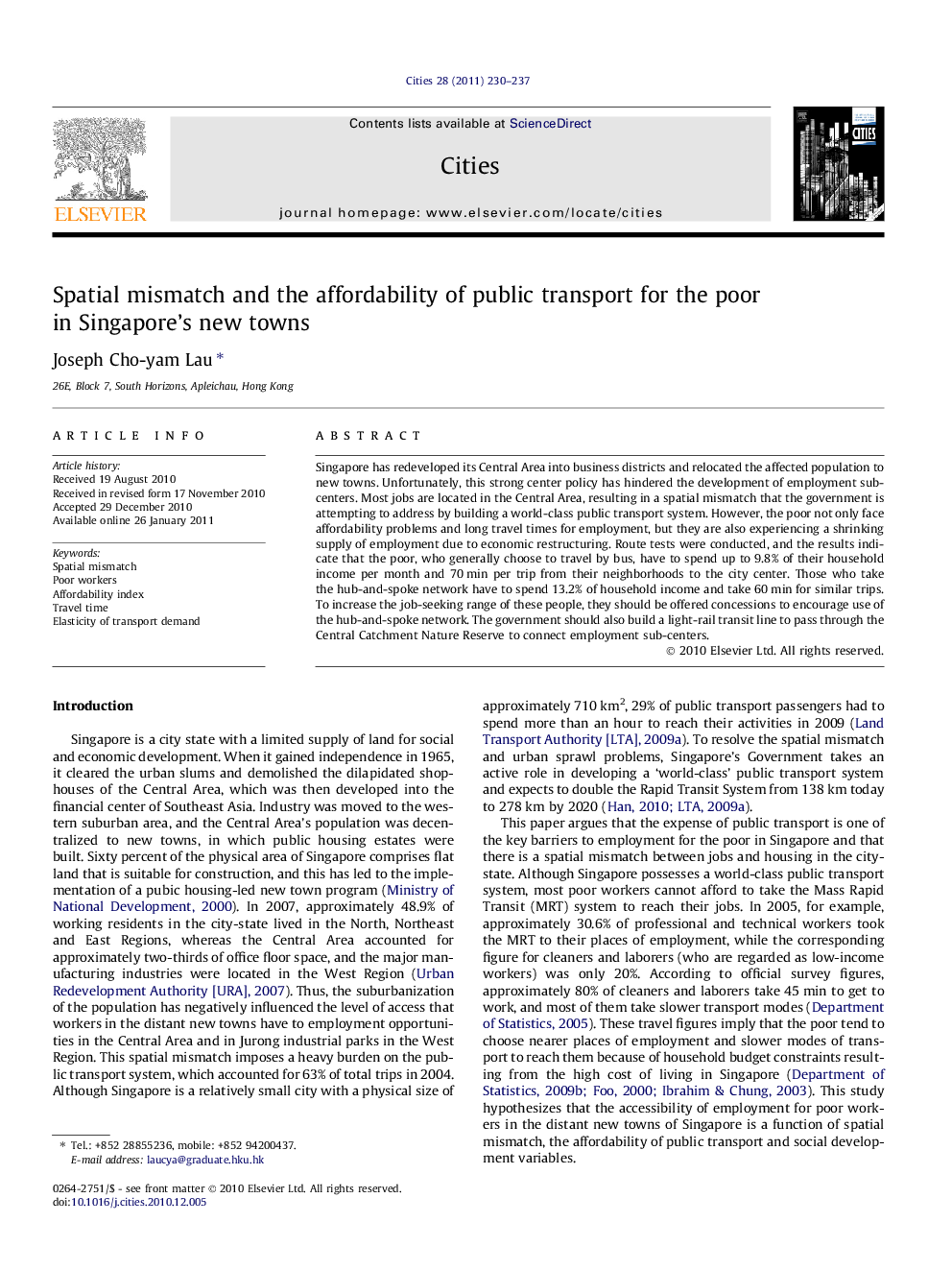| کد مقاله | کد نشریه | سال انتشار | مقاله انگلیسی | نسخه تمام متن |
|---|---|---|---|---|
| 1008788 | 938596 | 2011 | 8 صفحه PDF | دانلود رایگان |

Singapore has redeveloped its Central Area into business districts and relocated the affected population to new towns. Unfortunately, this strong center policy has hindered the development of employment sub-centers. Most jobs are located in the Central Area, resulting in a spatial mismatch that the government is attempting to address by building a world-class public transport system. However, the poor not only face affordability problems and long travel times for employment, but they are also experiencing a shrinking supply of employment due to economic restructuring. Route tests were conducted, and the results indicate that the poor, who generally choose to travel by bus, have to spend up to 9.8% of their household income per month and 70 min per trip from their neighborhoods to the city center. Those who take the hub-and-spoke network have to spend 13.2% of household income and take 60 min for similar trips. To increase the job-seeking range of these people, they should be offered concessions to encourage use of the hub-and-spoke network. The government should also build a light-rail transit line to pass through the Central Catchment Nature Reserve to connect employment sub-centers.
Research highlights
► Some low-income households in new towns face the accessibility problem of spatial mismatch during the process of suburbanization in Singapore.
► The Government has invested heavily in building a world class mass railway system to resolve this accessibility problem.
► The poor, who travel by bus, spend up to 9.8% of their household income per month and 70 min per trip from their neighborhoods to the city center.
► Those who take the hub-and-spoke network have to spend 13.2% of household income and take 60 min for similar trips.
► This study finds that to increase the job-seeking range of the low-income people in distant new towns, the government should offer concessions to encourage use of the hub-and-spoke network.
► The government should also build a light-rail transit line to pass through the Central Catchment Nature Reserve to connect employment sub-centers..
Journal: Cities - Volume 28, Issue 3, June 2011, Pages 230–237